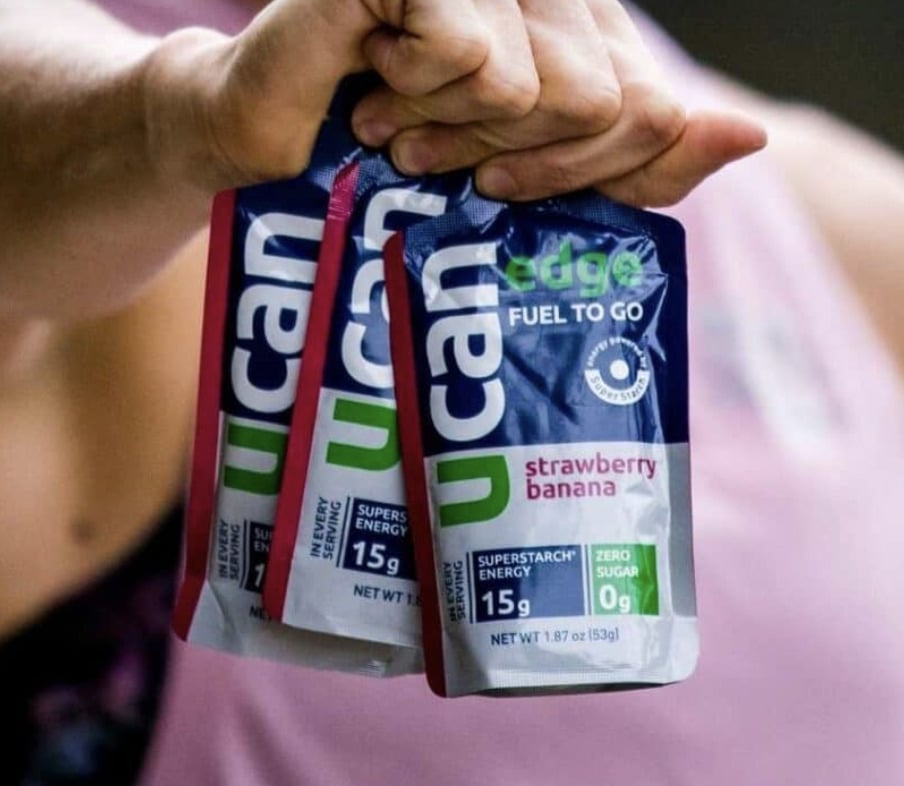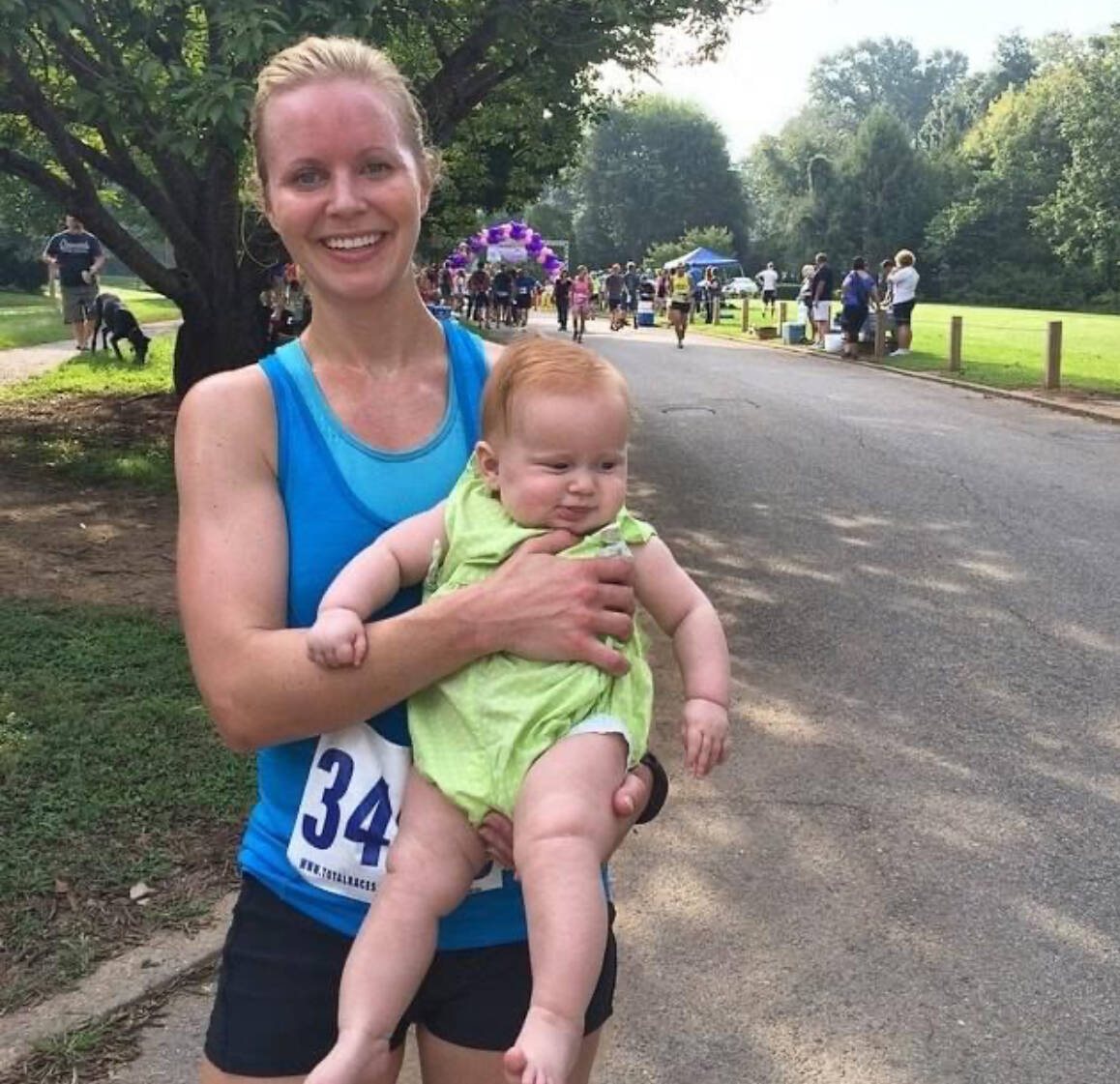Run With a Water Bottle: How to Carry Water While Running
Hydration is key for runners—for our health and our performance. This is why running with a water bottle is a smart choice but it can also be a nuisance. I explore how to carry a water bottle while running without it slowing you down!

When we run, and especially if it is hot outside, we sweat, increasing our risk for dehydration. This can be accompanied by a headache, rapid heart rate, and fatigue—all factors that can slow us down. Not good. But staying hydrated while running is tricky. I will admit that my hydration plan for long runs has often been an afterthought. And I’ve ended up really regretting this because my runs felt horrible because I felt horrible.
When I started planning my hydration for marathon training runs, I ran better and felt better during and after. (I share my fueling and hydration strategy for my 2:54 marathon here.) In this article, we will explore the best way to hydrate and all the options for hydration while running. So, let’s go!
Table of contents
The Pros of Running with a Water Bottle
Running with a water bottle is truly the best way to hydrate as it helps you stay on top of your hydration so you can run better (and feel better). Running with a water bottle helps you:
- Stay cool on hot days (can also squirt on yourself!)
- Keep hydrated
- Take in energy gels that require water for consumption
- Cut down on the need to stop for water or do out-and-backs
- Lessen risk of your stashed bottle being taken (this happens!)
- Improved recovery from proper hydration
- Better performance
- Don’t have to mess with water stops (that slow you down!) during races
The Cons of Running With a Bottle of Water
I used to HATE running with a water bottle because it seemed so cumbersome trying to run fast carrying a couple of pounds of fluid in my hands. Here are some reasons not to run with a water bottle:
- Heavy and cumbersome especially if you are running fast (though, it does get lighter as you drink!)
- May not be enough fluid—and then what?!
- Splashes around
- Lid can be hard to open to sip
- Drinking water while running can lead to more pit stops
Other Ways to Carry Water When Running
If running with a bottle of water isn’t for you, here are other ways you can carry water when running:
Wear it.
You can wear a hydration vest which carries fluid in a bladder with a straw, a hydration belt which carries small bottles on a belt, and a running fanny pack with bottle holder that sits near the small of your back.
Use a strap.
A bottle strap like this can convert any bottle to a handheld so you don’t have to worry about holding onto or investing in one.
Stash it.
You can stash bottles on your route or circle back to it to avoid having to drive to drop spots. Be sure to hide your bottles well if you do this so they don’t get stolen.
Have a crew.
Have a loved one bring hydration to you.
Plan out water stops.
You can plan your run so that you run by water fountains or even a gas station to rehydrate.
Rely on aid stations.
If racing, research to see if your race has aid stations. This way you don’t have to handle carrying anything but I do recommend practicing grabbing the cups.
Handheld water bottle.
Running with a handheld water bottle seems like a no-brainer but runners don’t like to run with them because they can be cumbersome to carry and slow us down! The good news is, you can run with a water bottle for half your run and leave it someplace to get later and also, it gets lighter as you use it. There are also light and comfortable handhelds designed for runners like us! Below are my favorites!
The 5 Best Runners Drinking Bottles
I now run with a water bottle on hot, long runs. Why? Because I found the right
water bottles to run with which can make it feel like I am not carrying much of anything! Below are the best runners drinking bottles—all dishwasher safe which is important for us busy moms!
Nathan Speed Draw Plus — $35
My husband carries this handheld running water bottle for his ultra-marathons. It’s light, grip-free, has a pouch to carry gels and essentials, insulated, and holds 18 ounces of fluid.
Nathan Running Handheld Quick Squeeze — $30
If you want just a basic handheld bottle, then this is the one for you. This Nathan handheld is the one that converted me to be a bottle carrier during long runs and marathons. It fits my hand, is light, and easy to open and close the spout with my mouth. Carrying only 12 ounces of fluid, it’s not as heavy as the Speed draw.
Nathan Speedview Running Handheld — $40
If you carry your phone with you, the Nathan Speedview has a pocket so you can carry AND see your phone while running. The screen is actually conductive, so you don’t have to pull your phone out to use it. This does make it heavy though—and not super comfortable to run with.
Amphipod Ergo-lyte Handheld Water Bottle — $25
This water bottle only carries 10.5 ounces of water, making it ultra-light. It has storage for essentials, and I love that it has an insulating sleeve that minimizes sweat and keeps your fluids cooler.
HydraPak Skyflask IT Speed — $24
A soft flask is collapsible and therefore easy to carry when empty, and also lighter—only 2 ounces (lightest on the list). This bottle holds 10 ounces and is no frills aka zero storage. This is truly a minimalist design with a lifetime guarantee.
Check out my article on how to store your energy gels on the run.
Why We should Carry a Water Bottle While Running
Research shows a link between just a two percent loss in body weight from dehydration to a performance decline. Drinking water with electrolytes like sodium in a sports drink, salt tablet, or energy gel can not only be a performance enhancer–but also a lifesaver.
Electrolytes are minerals important for keeping your body hydrated, muscle contractions, and nerve signaling, pH level balance, etc. Without electrolytes, you also run the risk of a fluid imbalance called hyponatremia, which can be fatal!
A handheld water bottle for running is a good idea if you are running for longer than an hour, or if you are running in hot weather (particularly over 60 degrees).r.
If you’re like me, and you hate holding a water bottle while running because you feel like it slows you down—you need to find the right water bottle for you (like I did…I love the small 12-ounce Nathan because it doesn’t require me to grip it, it was light, and it got lighter as I ran.)
For my two marathons I ran with a bottle, I had my husband hand me a new handheld at the half. For the other marathon (which I ran a PR), I dropped my bottle and did aid stations on the back half (I hate water stops in marathons—so I avoid them if I can).
It can take trial and error, but you have options for hydration while you run! How do you carry your hydration on the run?






